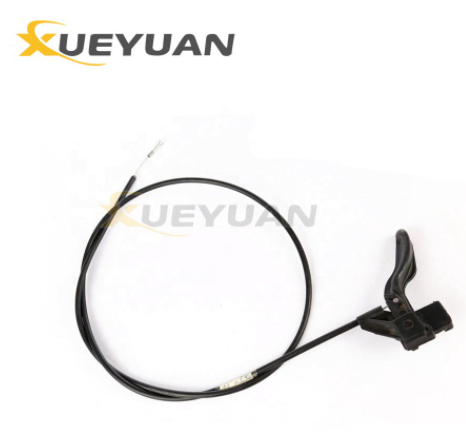How to Select the Correct Control cable?
Control cables can be found in almost all industrial applications. As the name suggests, they are used to control machine components or their energy supply (e.g. for small motors). They are used to transmit simple control signals (I/0 commands). Examples are machine status signals or simple switches.
What is actually meant by a control cable and where are they used?
Control cables can be found in almost all industrial applications. As the name suggests, they are used to control machine components or their energy supply (e.g. for small motors). They are used to transmit simple control signals (I/0 commands). Examples are machine status signals or simple switches.
What are the typical characteristics of a control cable?
In the industrial environment, the term control cable refers to an unshielded or shielded multi-core connection cable with a smaller cross section.
How do I now select the right control cable for my application?
An important criterion for selecting the right cable is the voltage class. For control cables this is already defined by the designation 300/500V. The voltage class can also be found in the respective technical documentation of the machine components to be controlled.
If no technical documentation is available, the inscription on the cable can also help to determine the correct setup. Details such as the core cross-section combination, cable shield data if any and the voltage level are usually inscribed. Depending on the standard fulfilled, further details are also included.
The final step to the right control cable
• It is therefore necessary to clarify the following criteria:
• Number of cores
• Cross section
• Voltage class
• Necessity of a cable shield
• Only then comes the final step:

The selection of the cable quality or the outer jacket material
To make the right choice here, you should ask yourself the following questions:
• Is it a fixed, moving or chain application?
• What is the (chain’s) bend radius?
• What is the target number of cycles or service life?
• How long is the travel of the cable (in the chain if applicable)?
• How high is the speed and acceleration of the energy supply system?
• What are the ambient conditions (heat/cold)?
• What are the media influences?
• What was the reason for the failure of the previously used cable solution?
• Specifications and standards to be met
Once these points are clarified, the ideal cable can be selected. Those who prefer digital technology can also use tools like our product finder.
Other considerations
Conductors
Is the material to be bare, tinned or plated copper, or perhaps, aluminum or bronze, nickel or other alloy?
Insulation
What temperature will the wire be subjected to in the application in which it will be used? Will the wire be exposed to moisture, chemicals or oils?
Coverings
Will the application require a protective covering such as nylon, cotton, glass or metal braid over the insulation?
Processibility
Will the wire require processing such as stripping or cutting? Will processing be done by hand or with an automated machine?
Conclusion
With a little background knowledge and simple queries you can quickly and easily find the right cable. Of particular importance here are the electrical and mechanical criteria. You also need information about the intended use.
If the cable is correctly dimensioned, downtime can be avoided and maintenance costs actively reduced. In addition, we are a Control cable supplier, please feel free to contact us if you need them!